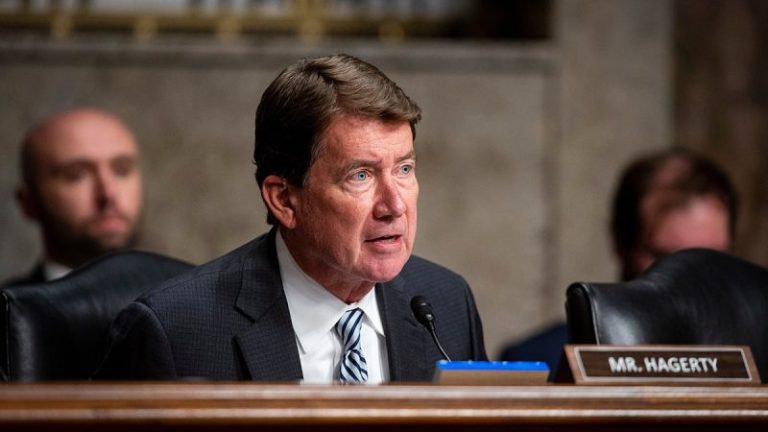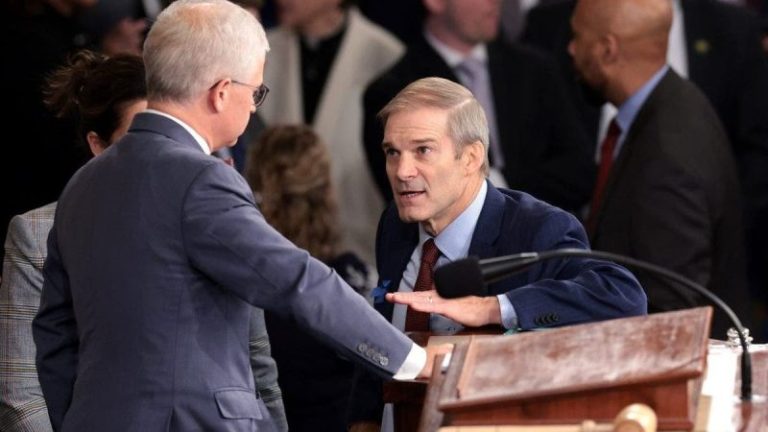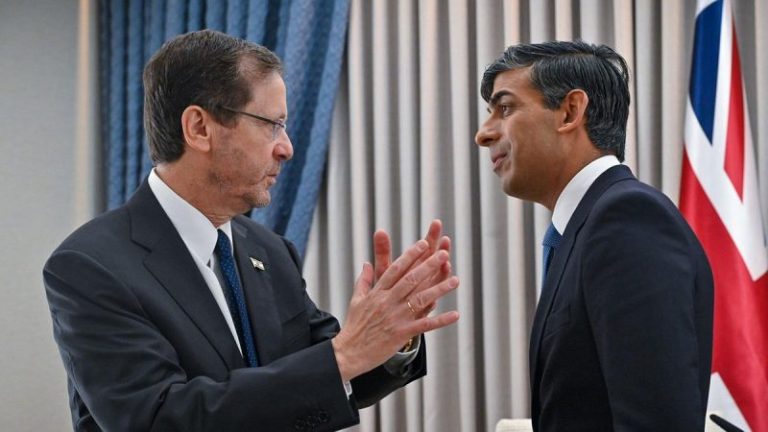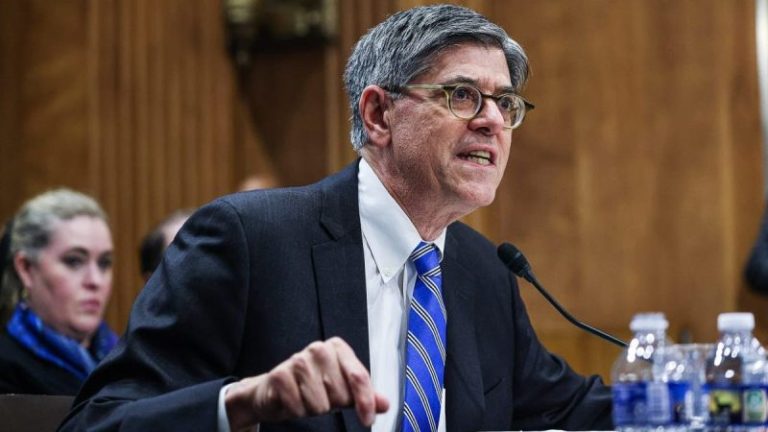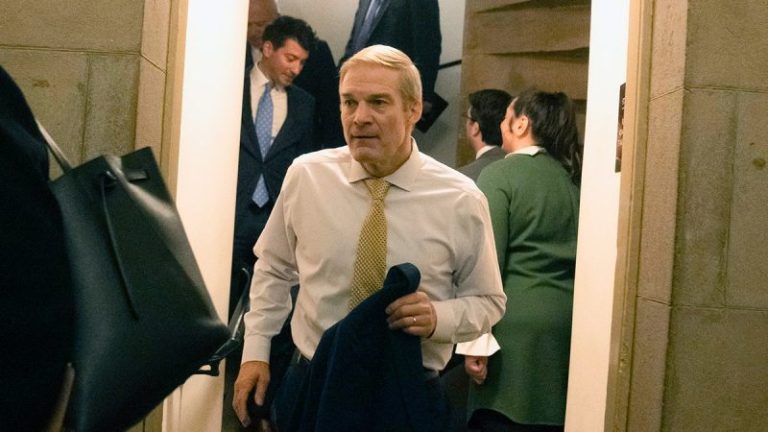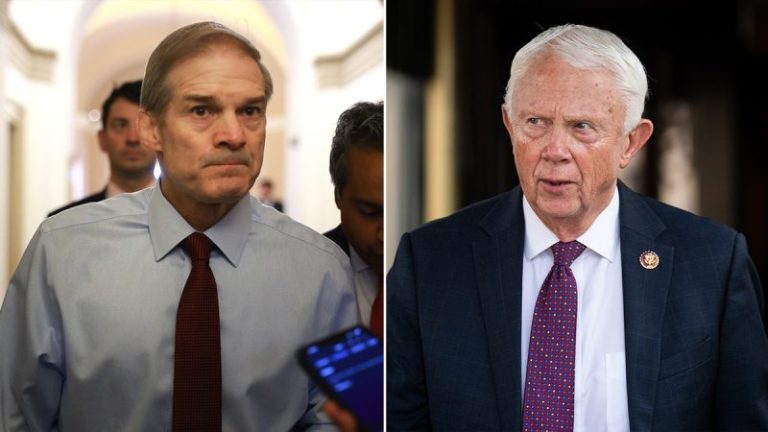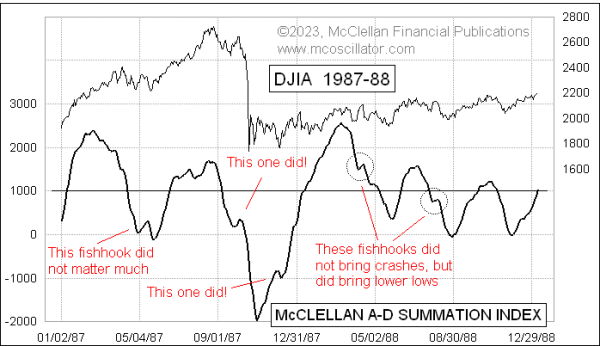A group of Republican senators led by Sen. Bill Hagerty, R-Tenn., are introducing legislation Thursday to redirect funds bound for Gaza to instead help replenish Israeli’s defensive ‘Iron Dome’ system.
The bill, which has 10 Republican co-sponsors as of Thursday morning, would require President Biden to transfer ‘all unexpected balances of appropriations made available to Gaza to the Department of Defense, to be available for grants to Israel for the Iron Dome short-rage rocket defend system.’
‘In the wake of Iran-backed Hamas’s savage attack on Israel in which over 1,300 people in Israel were murdered, including 30 Americans, and as Iran-backed Hamas terrorists continue to launch missiles and rockets into Israel, the American people have seen the images of Israel’s Iron Dome missile defense systems repeatedly intercepting rockets and saving the lives of countless civilians,’ Hagerty told Fox News Digital. ‘My legislation requires the Biden Administration to halt U.S. foreign assistance from going to Hamas terrorist-dominated areas and instead to redirect these resources to help Israel resupply its life-saving Iron Dome interceptors. The United States should unequivocally support the right of Israel to defend itself from terrorists.’
Some U.S. officials are worried that Israeli’s defensive Iron Dome system could be stretched thin if the war with Hamas continues to escalate, a fear that would become even more dire if Hezbollah were to enter the conflict.
‘Israel is taking action right now to defend itself and its people. America cannot let Israel stand alone,’ Sen. John Barrasso, R-Wyo., a co-sponsor of the bill, told Fox News Digital. ‘The United States must ensure Israel has the weapons and the military assistance needed to fight any and all terrorist threats. The Iron Dome is the first line of defense for Israel. It is critical to replenish this vital missile defense system so it can remain effective and operational.’
Sen. Katie Britt, R-Ala., another co-sponsor of the legislation, argued the U.S.-backed Iron Dome system is ‘critical’ to Israel’s ability to defend its civilian population.
‘The Iron Dome is of critical importance for Israel as it defends innocent civilians against the barbaric brutality of Hamas’ terrorist attacks and lives with the reality of additional threats every day,’ Britt told Fox News Digital. ‘The United States stands strongly with Israel—our great ally, friend, and partner.’
The bill comes the same day as President Biden’s planned Oval Office address, set for 8 p.m. ET, with the president expected to make the case to Americans that it is critical to U.S. national security to continue military support for both Ukraine and Israel in the coming months.
Sen. Josh Hawley, R-Mo., another co-sponsor of the bill, argued that the president has insisted on sending aid to Gaza that should be redirected to Israel.
‘The Biden Administration insists on sending foreign assistance to Gaza, while Hamas steals it to fund weapons to kill Israelis and Americans,’ Hawley told Fox News Digital. ‘Congress must act to redirect these funds to Israel to help restock their critical missile defense systems.’
Sen. Marco Rubio, R-Fla., another bill co-sponsor, echoed concerns about funding to Gaza.
‘Now more than ever, the U.S. must stand in support with our greatest ally in the Middle East, Israel,’ Rubio told Fox News Digital. ‘Instead of providing assistance to Gaza, the Biden Administration must ensure any taxpayer funds are used to support Israel’s Iron Dome to defend its citizens from the savagery of Iran-backed Hamas.’
Meanwhile, Sen. Cynthia Lummis, R-Wyo., argued that the U.S. has a ‘moral obligation’ to make sure Israel has the ability to defend itself.
‘In the face of such unspeakable attacks, we have a moral obligation to ensure Israel, one of our strongest allies, has the ability to properly defend its people,’ Lummis, a co-sponsor of the bill, told Fox News Digital. ‘Now more than ever, it’s critical we help fortify the cornerstone of Israel’s defense system to make sure Israel can defend itself from terrorists.’
The bill redirecting funds is also co-sponsored by Sens. Ted Cruz, R-Texas; Thom Tillis, R-N.C.; Rick Scott, R-Fla.; and Tommy Tuberville, R-Ala., with Tuberville arguing that all foreign assistance to Gaza should be halted.
‘The Hamas and Iran-orchestrated terror attacks we have seen in Israel are pure evil,’ Tuberville told Fox News Digital. ‘Israel must wipe Hamas from the face of the earth and ensure that this never happens again. As Israel continues to fight and kill terrorists, the United States has a strategic interest in supporting Israel and supplying Israel. We should immediately stop all foreign assistance to Hamas-controlled Gaza and redirect those funds to the Iron Dome, which has saved countless Israeli civilian lives.’
Reached for comment by Fox News Digital, a National Security Council spokesperson said that ‘U.S. assistance for Palestinians does not go to or through Hamas’ and that the State Department ‘has rigorous oversight over UNRWA policies, programs, and finances – including through the completion of an annual report to Congress on key UNRWA issues, such as quarterly assessments of UNRWA facilities, potential misconduct by UNRWA staff or beneficiaries, and compliance with section 301(c) of the U.S. Foreign Assistance Act of 1961.’
‘The United States provides funding for essential and life-saving humanitarian assistance to Palestinian refugees through vetted international and non-governmental organizations,’ the spokesperson said. ‘These organizations fill a critical role in providing assistance that would otherwise be filled by terrorist organizations like Hamas. Our trusted partners and beneficiaries are subject to extensive vetting and oversight procedures to help prevent assistance from flowing to individuals or organizations that are affiliated with terrorists.’
The spokesperson pointed to remarks Biden has made throughout the month, including directing his team to ensure that Israel had everything they needed for the Iron Dome.
‘We’re surging additional military assistance, including ammunition and interceptors to replenish Iron Dome,’ Biden said last week. ‘We’re going to make sure that Israel does not run out of these critical assets to defend its cities and its citizens.’
The spokesperson also noted that Biden has given assurances that aid would not continue if it fell into the hands of Hamas.
‘If Hamas confiscates it or doesn’t let it get through or just confiscates it, then it’s going to end, because we’re not going to be sending any humanitarian aid to Hamas if they’re going to be confiscating it,’ Biden said Wednesday. ‘That’s the commitment that I’ve made.’
Meanwhile, Deputy White House Press Secretary Andrew Bates pointed out that the ‘vast majority of the Palestinian people are not Hamas.’
‘There is strong, bipartisan support for President Biden’s efforts to deliver humanitarian necessities to the people of Gaza – like food, water, and medicine – without benefiting Hamas,’ Bates said.

